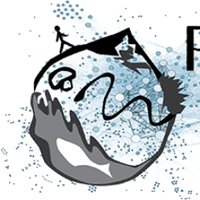Bioinformatic pipelines combining denoising and clustering tools allow for more comprehensive prokaryotic and eukaryotic metabarcoding
This article has been Reviewed by the following groups
Listed in
- Evaluated articles (Peer Community in Ecology)
Abstract
Environmental DNA metabarcoding is a powerful tool for studying biodiversity. However, bioinformatic approaches need to adjust to the diversity of taxonomic compartments targeted as well as to each barcode gene specificities. We built and tested a pipeline based on read correction with DADA2 allowing analysing metabarcoding data from prokaryotic (16S) and eukaryotic (18S, COI) life compartments. We implemented the option to cluster amplicon sequence variants (ASVs) into operational taxonomic units (OTUs) with swarm, a network‐based clustering algorithm, and the option to curate ASVs/OTUs using LULU. Finally, taxonomic assignment was implemented via the Ribosomal Database Project Bayesian classifier (RDP) and BLAST. We validated this pipeline with ribosomal and mitochondrial markers using metazoan mock communities and 42 deep‐sea sediment samples. The results show that ASVs and OTUs describe different levels of biotic diversity, the choice of which depends on the research questions. They underline the advantages and complementarity of clustering and LULU‐curation for producing metazoan biodiversity inventories at a level approaching the one obtained using morphological criteria. While clustering removes intraspecific variation, LULU effectively removes spurious clusters, originating from errors or intragenomic variability. Swarm clustering affected alpha and beta diversity differently depending on genetic marker. Specifically, d‐ values > 1 appeared to be less appropriate with 18S for metazoans. Similarly, increasing LULU’s minimum ratio level proved essential to avoid losing species in sample‐poor data sets. Comparing BLAST and RDP underlined that accurate assignments of deep‐sea species can be obtained with RDP, but highlighted the need for a concerted effort to build comprehensive, ecosystem‐specific databases.


